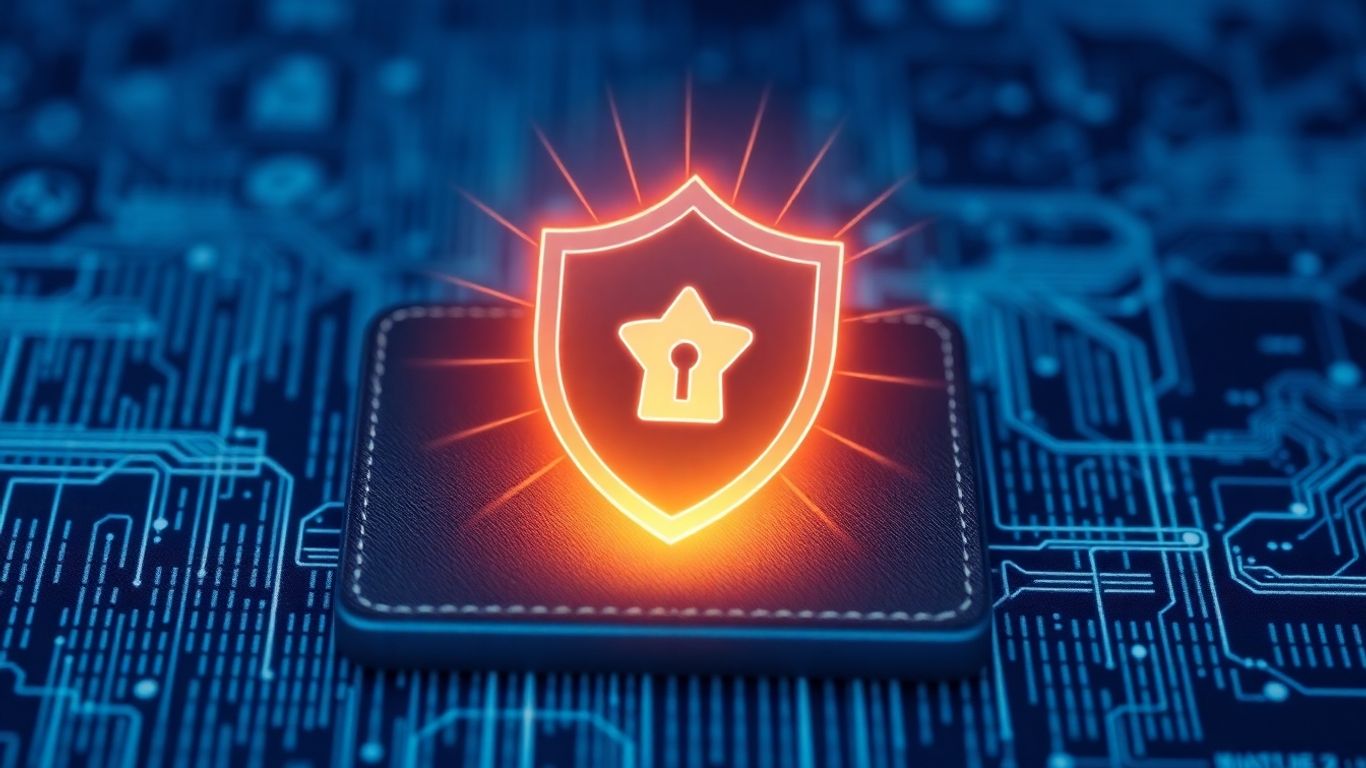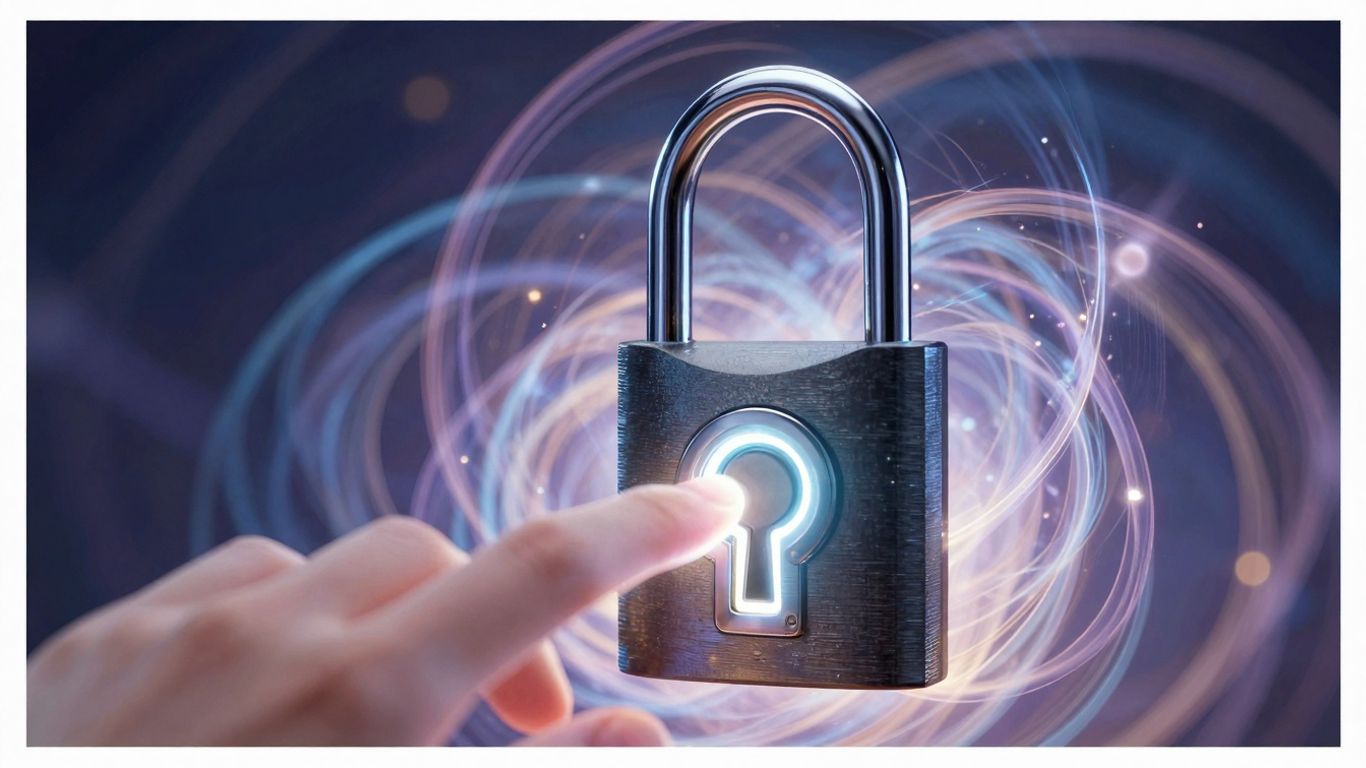[ newsletter ]
Stay ahead of Web3 threats—subscribe to our newsletter for the latest in blockchain security insights and updates.
Thank you! Your submission has been received!
Oops! Something went wrong. Please try again.
Understand wallet trust scores and their importance in blockchain security. Learn how on-chain activity, network relationships, and historical data build a comprehensive reputation index.





Navigating the crypto world can feel like walking through a maze sometimes. You hear about all these amazing projects, but then you also hear about scams and hacks. It makes you wonder who or what you can really trust. That's where the idea of a wallet trust score comes in. Think of it as a way to get a clearer picture of the safety and reliability of different digital wallets and the activities linked to them. It’s all about bringing a bit more clarity and security to your digital transactions.

So, what exactly is a Wallet Trust Score? Think of it like a credit score, but for your digital wallet in the crypto world. It's not just about how much money you have or how many transactions you've made. Instead, it's a more nuanced look at your wallet's overall reputation. This score is built using a bunch of data points, including what you do on the blockchain, any labels or attestations associated with your wallet, and even things like proof-of-personhood. Essentially, it's a way to measure how reliable and valuable a wallet is within the Web3 ecosystem. It helps sort through the noise and figure out who's who.
Why should you care about your wallet's reputation? Well, in the decentralized world, reputation matters a lot. Traditional metrics like just counting wallets or total transaction volume can be pretty misleading. One person could have hundreds of wallets, making it look like there are more users than there actually are. Plus, many wallets might just pop in for a quick reward and then disappear. A Wallet Score gives a better picture by looking at the quality of engagement, not just the quantity. This helps projects identify genuine contributors, prevent bad actors (like those trying to game the system with multiple fake wallets, known as Sybil attacks), and generally build a more trustworthy community. It's about understanding the real value a wallet brings.
Looking at wallet activity goes way deeper than just checking if a transaction happened. We're talking about analyzing patterns. For example:
A Wallet Score moves past simple metrics to offer a more insightful view of a wallet's standing. It's about recognizing genuine engagement and contribution within the decentralized space, helping to build a more secure and reliable environment for everyone involved. This kind of detailed analysis is becoming increasingly important as the Web3 space matures and attracts more participants, both good and bad. Wallet Score systems are key to navigating this complexity.
So, what actually goes into figuring out if a crypto wallet is trustworthy? It's not just about how much money is in it or how many times it's been used. A real trust score looks at a few different things to get a clearer picture.
This is where we look at what the wallet has actually been doing on the blockchain. Think of it like checking someone's transaction history, but way more detailed. We're talking about how often it moves funds, where those funds come from and go to, and if the activity looks normal or a bit fishy. Consistent, varied activity across different types of decentralized applications (dApps) usually points to a more legitimate user.
Here's a quick breakdown of what's examined:
The sheer volume of transactions doesn't always mean a wallet is good. Sometimes, a wallet making thousands of tiny, repetitive transactions might just be trying to game the system or appear more active than it really is. Quality and consistency often matter more than just raw numbers.
Beyond what a single wallet does, we also look at who it's connected to. It's like checking your friends to get a sense of your character, but for wallets. If a wallet is constantly interacting with wallets that are known to be involved in shady dealings, that's a red flag. We map out these connections to see if a wallet is part of a suspicious network.
Key aspects include:
What has the wallet done in the past? This involves looking at its long-term behavior and how it has performed over time. A wallet that has been active and engaged in a positive way for a long time is generally seen as more trustworthy than a brand new wallet with no history.
This can include:
By combining these different elements – on-chain actions, network connections, and historical track record – we can build a much more accurate and reliable trust score for any given wallet.
Wallet trust scores aren't just about knowing who's who; they're a practical tool for beefing up security across the board. Think of it as a background check for digital wallets. By understanding the reputation and behavior patterns of different wallets, projects and users can spot potential risks before they become major problems. This proactive approach is way better than just reacting after something bad happens.
One of the biggest wins with wallet trust scores is catching bad actors early. Scammers and hackers often use multiple wallets to carry out their schemes, like trying to exploit airdrops or manipulate governance. A trust score can flag wallets that exhibit suspicious patterns, such as identical behaviors across many accounts or a history of low-value, one-off transactions. This helps filter out the noise and focus on genuine participants.
The ability to get an instant risk assessment by analyzing transaction patterns and on-chain behavior is a game-changer for security. It means you're not blindsided by threats.
For any project or decentralized application (dApp), knowing the risk profile of the wallets interacting with it is super important. This applies to everyone involved, from developers to regular users. A wallet trust score provides a clear, data-driven way to assess these risks.
Here’s how it breaks down:
Integrating wallet trust scores into your security strategy creates a more robust defense system. It’s not just about one tool; it’s about building layers of protection. By having a dynamic view of wallet reputations, you can adapt your security measures more effectively.

So, how do these trust scores actually get calculated in real-time? It's not just some simple checklist. We're talking about sophisticated AI systems here. These systems look at a whole bunch of stuff from a wallet's history – like how often it trades, what kinds of tokens it holds, and if it's involved in things like staking or governance. The goal is to figure out if a wallet is likely to be a good, long-term player in an ecosystem, or just someone looking to grab a quick buck and disappear. Think of it like a credit score, but for your crypto activity. It helps separate the genuine users from the bots or those trying to game the system.
What's really cool is that this isn't just for big companies or developers. These dynamic trust scores are becoming more accessible. Platforms are starting to offer tools where anyone can look up a wallet's score. This means regular investors can get a quick snapshot of the risk associated with interacting with a particular wallet or even a smart contract. It's like having a built-in safety check before you click that link or send those funds. It helps level the playing field a bit, giving more people the information they need to make safer decisions in the crypto space.
One of the biggest advantages of dynamic trust scores is their ability to provide up-to-the-minute security assessments. Unlike static audit reports that can become outdated quickly, these scores are constantly updating. This means they can react to new threats or changes in a wallet's behavior almost instantly. If a wallet suddenly starts acting suspiciously, its trust score can drop, flagging it as a potential risk. This real-time feedback loop is super important for staying ahead of bad actors in the fast-paced crypto world. It's about continuous monitoring, not just a one-time check.
So, how do protocols actually use these fancy wallet trust scores? Well, the easiest way is through an API. Think of it like a direct line that lets a protocol ask, "Hey, what's the deal with this wallet address?" and get an answer back, like, "This one looks pretty solid," or "Hmm, maybe avoid this one." This is super handy for things like deciding who gets access to certain features or if a transaction should even be allowed to go through. It’s all about making quick, informed decisions without a lot of manual checking.
This instant feedback loop is key for keeping decentralized systems safe and running smoothly.
Here’s a quick look at what that might involve:
This kind of integration means protocols can build security right into their core functions, rather than trying to bolt it on later. It’s a much more proactive approach to security.
Beyond just checking individual wallets, trust scores can be woven into the fabric of automated security checks for entire protocols. Imagine a system that's constantly looking at the health of a protocol, not just its code, but also the behavior of the users interacting with it. This is where things get really interesting. Instead of just relying on a one-time audit report, protocols can have continuous, automated audits running in the background. These systems can flag unusual patterns or suspicious activity from wallets interacting with smart contracts. For example, if a bunch of new wallets suddenly start interacting with a protocol in a very similar, bot-like way, an automated audit system using trust scores could flag this as a potential Sybil attack or other manipulation attempt. It’s like having a security guard who’s always on duty, watching for anything out of the ordinary. This is a big step up from just checking code once and hoping for the best. The Veritas Protocol is a good example of a system that uses AI for this kind of continuous auditing.
Continuous monitoring means that security isn't a one-and-done task. It's an ongoing process that adapts to new threats and changing user behavior, making the entire ecosystem more resilient.
Finally, integrating trust scores helps build credibility. When a protocol can show that it’s actively using trust scores and has undergone rigorous, automated security audits, it sends a strong signal to users and investors. It’s like a badge of honor, proving that the project takes security seriously. This can be presented in various ways, such as on-chain attestations or embeddable widgets displaying the protocol's security status. For users, this means they can interact with a protocol with more confidence, knowing that steps have been taken to protect them. For investors, it’s a sign of a well-managed and secure project, reducing the perceived risk. This transparency is vital in building a trustworthy decentralized ecosystem.
Looking ahead, the landscape of wallet trust and security is set for some pretty big shifts. We're moving beyond just basic checks and into a world where security is constantly evolving, almost like a living thing. Think about it: the bad guys aren't standing still, so why should our defenses?
Traditional security audits, the kind you do once and then forget about, just aren't cutting it anymore. The speed of attacks means we need systems that are always on, always watching. This is where a continuous monitoring architecture comes in. It's like having a security guard who never sleeps, constantly checking for anything suspicious. This approach uses AI to analyze everything in real-time, not just looking for known problems but also spotting new, weird patterns that might signal trouble. It’s about building security into the very fabric of the system, not just tacking it on later.
Artificial intelligence is really stepping up its game. We're seeing AI systems that can process massive amounts of data, looking at contract interactions, business logic, and how different parts of a protocol talk to each other. These AI agents can spot vulnerabilities that humans might miss, especially in complex systems. They're getting faster and more accurate, processing entire codebases in ways that were impossible just a few years ago. This means we can find and fix issues before they ever become a problem for users. It’s about making security smarter and more proactive, moving from reacting to breaches to preventing them altogether. This AI-powered approach is key to building a safer blockchain environment.
As technology advances, so do the threats. This means the standards for what's considered 'secure' have to keep pace. We're seeing a push for more dynamic trust scores that update constantly, reflecting the latest on-chain activity and known risks. This moves away from static reports towards a more fluid assessment of security. The goal is to create a more transparent and trustworthy ecosystem for everyone involved, from individual users to large protocols. It’s a constant race, but one where advanced AI and continuous monitoring are giving us a real edge.
So, we've talked a lot about how important it is to know who you're dealing with in the crypto space. From smart contracts to individual wallets, having a way to gauge trustworthiness is key. Tools like Wallet Trust Scores are starting to give us that insight, helping us spot potential issues before they become big problems. It's not about being perfect, but about having a better picture to make smarter choices. As this tech keeps evolving, expect these kinds of reputation systems to become even more common, making the whole crypto world a bit more predictable and, hopefully, a lot safer for everyone involved.
Think of a Wallet Trust Score like a report card for a crypto wallet. It looks at how a wallet has behaved in the past, who it has interacted with, and its overall history to give it a score. This score helps people understand if a wallet is likely to be safe and reliable.
Just like people have reputations, crypto wallets do too. A good reputation means the wallet has a history of safe and honest dealings. A bad reputation could mean it's been involved in risky or dishonest activities. Knowing this helps protect you from scams and bad actors in the crypto world.
It's a mix of things! The score looks at what the wallet has done on the blockchain (like transactions), who it's connected to, and its past performance. It's like putting together puzzle pieces to get a full picture of the wallet's history and trustworthiness.
You can use these scores to check the safety of wallets before you send them money or interact with them. It's a great tool for spotting potential problems early and avoiding risky situations, making your crypto activities much safer.
No, they're not! These scores can change over time. As a wallet does more things, its score might go up or down. This means they are 'dynamic,' giving you the most current information about a wallet's reputation.
Often, yes! Many platforms and tools are making these scores available. You can usually check them through services that analyze blockchain activity, helping you make smarter decisions about who you interact with in the crypto space.


